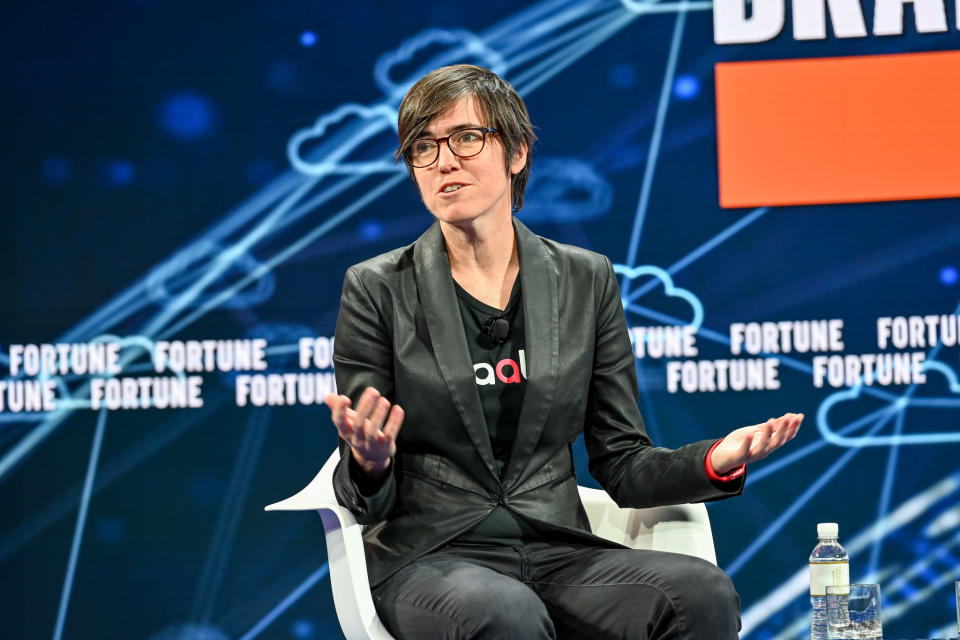Canada-based Waabi raises $200 million, touts plan to get gen AI driverless trucks on the road in 2025

Toronto-based self-driving startup Waabi announced a fresh funding round of $200 million on Tuesday, promising a 2025 rollout of the company’s generative AI-powered driverless trucks.
The Series B funding round, led by Uber and Khosla Ventures, brought in new strategic investors Nvidia, Volvo Group Venture Capital, Porsche Automobil Holding SE, Scania Invest and Ingka Investments. The company declined to share a new valuation, but said the new capital will build on other recent news including the opening of the company’s new trucking terminal in Texas.
While it is not the record-setting $1 billion round of funding scooped up last month by UK-based self-driving competitor Wayve (which is backed by Microsoft and Meta chief scientist Yann Lecun), Waabi's still-hefty injection of fresh capital underscores investors' increasingly optimistic expectations around the potential for autonomous driving technology.
For Waabi founder and CEO Raquel Urtasun, it's an important milestone in her dream to solve the complex challenges of self-driving vehicles and a more recent obsession to bring the power of generative AI to the physical world. Now, the computer scientist, who previously led Uber’s self-driving division, insists the three-year-old startup’s vehicles are on the verge of reaching Level 4 autonomy—which means the trucks would be able to hit the road without any human intervention, on par with the capabilities of the Waymo robotaxis plying the streets of San Francisco and other cities.
Waabi's Level-4 trucks will hit the road in 2025, initially in Texas, plying the busy freight-traffic corridor between Dallas and Houston, the company said.
The key to Waabi’s swift advances, according to Urtasun, is a new generative AI model that can take in sensor data from the vehicle’s surroundings and make predictive decisions based on that data, similar to how large language models (LLMs) like ChatGPT learn by predicting the next word in a sentence.
It is built differently from Transformers, the generative AI architecture that underpins today’s large language models (LLMs) like ChatGPT and was famously developed by a group of Google researchers in 2017.
“We definitely have the next architecture for the physical world,” said Urtasun. “I think it's clearly recognized that Transformers are not the answer to everything.”
Waabi’s new AI model, she explained, which runs directly on the vehicle (not in the cloud), can take driving information and generalize it to any situation that might happen on the road, even if the model has never seen it before. In addition, it gets information from Waabi World, the company’s generative AI-powered simulator, which can build ‘digital twins’ of the world that teach the vehicle to learn from its mistakes.
No amount of human driving could ever gather data on everything that potentially might happen, Urtasun explained, yet a self-driving vehicle must be able to tackle even the least likely situation, or else there could be catastrophic consequences. “You need it to be safe from day one,” she said. With the new model and simulator, “we can clone everything a driver sees in the world, then you can use those bits and pieces to create new situations,” she explained. “This is actually a full virtual world where every pedestrian, every vehicle, is an AI agent, and they all interact,” she explained, creating all of the situations a vehicle will face.
Waabi claims this technology allows self-driving vehicles to “reason,” which it adds is different from current approaches to self-driving improvement where the vehicle must learn from millions of miles of human driving (it says this approach is used by Wayve, which also has touted its generative AI model, as well as older self-driving companies like Waymo and Cruise). A Waabi spokesperson said “the best way I can describe it is to think about a car with a tree tied to the top of its roof. Other self-driving vehicles will see this as a tree in the middle of the road and try to avoid it, while Waabi's technology allows for its vehicles to interpret the situation and realize that the tree isn't in the road, but in fact, on top of another car and the truck can proceed as normal.”
In choosing investors for its latest round, Urtasan said the company wanted to be strategic and bring together companies in AI, logistics and automotive. But she says that Waabi’s technology could be used in other types of vehicles or other physical-world transportation applications.
“The complexity of the problem is fascinating," said Urtasan. “I have infinite energy for it."
This story was originally featured on Fortune.com

 Yahoo Finance
Yahoo Finance 